

During the summer of 2007, I spent three weeks in London doing a preparatory trip for my dissertation research into the British East India Company. I wrote up a short travel report about my experiences in London for the website, which can be found here. Although I was spending most of my time reading through different manuscript sources in the British Library, I did have evenings and weekends free to do some exploring of the surrounding city. One day while walking through a random London street, I spotted a sign advertising roundtrip bus fares to Ireland for £20. I think that I actually did a double-take when I saw that sign. Bus trips to Ireland?! Uh, isn't that a separate island from Britain? And that price tag seemed far too low to be genuine, even back in 2007 prices. I checked out the website that was offering the trip, and to my surprise it did seem to be genuine. The travel company was offering a bus trip that would leave London in the late afternoon on a Friday, drive to the Welsh coast and take an overnight ferry across the sea, then arrive in Ireland the next morning and drive for another three hours to reach the city of Cork. I was looking for something interesting to do on my second weekend overseas, and decided that this would be worth exploring. Why not, right? It certainly was cheap enough. I bought myself a ticket and booked a place to stay in Cork, then prepared for this new adventure.


When the next Friday arrived, my tour bus left from Victoria Station and slowly traveled to the west, chasing after the setting sun. It was a long drive from London to the Pembrokeshire coast in Wales, and the bus didn't arrive until after midnight. We disembarked from the bus at the small port town of Fishguard, and yes that's the actual name, only to board the ferry that would take us over to Ireland itself. I took some bleary-eyed pictures of the ship as we were leaving, but I was half asleep at the time and don't remember too much of this. I also didn't sleep especially well that night, curled up on the ground in a corner of the passenger section. The passage across to Ireland wasn't especially choppy or anything like that, I was simply operating on too little sleep and not enough food or drink. This was a situation where traveling on the cheap made for an uncomfortable experience.


My spirits perked up the next morning, when I was greeted by a beautiful sunrise over the waters of the Irish Sea. The ferry drew near to the coastline of Ireland at about 7:00 AM, and I was both awake and on the outside deck to watch as the vessel drew closer and closer to land. I was immediately struck by how green everything was on the approaching land; it seemed that Ireland wasn't known as the Emerald Isle for nothing. The small town where the ship was docking was known as Rosslare, situated at the southeastern tip of Ireland. Afer the ship had finished tying up to the docks, my group boarded the same bus again (which had come along for the ride in the belly of the ferry), and it was off to the west again for several more hours towards the city of Cork.


The bus stopped occasionally along the way to let everyone stretch their feet and use the restrooms. We had stopped several times on the drive from London to the Welsh coast, although I didn't take any pictures of the featureless rest stops that had marked our trip westward. Over here in Ireland, the one stop en route to Cork took place in the city of Waterford, which is pictured above. Waterford is a medium-sized city best known for the making of glass during the 18th and 19th centuries. "Waterford Crystal" was known internationally for its quality back in the city's heyday. This bus trip was not providing a tour of Waterford, however, and I had no chance to see the glass museum and manufacturing center that still exists in the city. We were back on the bus and off to Cork after a short rest.
The first thing that I did upon arriving in Cork was attempt to change my money into Euros. Unlike the United Kingdom, Ireland had switched over to the shared Euro currency and I was planning on changing a $100 bill into Euros to cover my expenses. Well, as luck would have it, none of the banks in downtown Cork would accept my $100 bill to change currencies! Apparently there had recently been someone forging counterfeit money, and none of them would take a bill as large as $100 to change into Euros. A kind stranger who had an account at one of the banks even tried to do the money conversion for me, and they still wouldn't allow it. I had about £15 in random change in my pockets, and I was able to convert that into a little over 20 Euros which then had to last me for the rest of my stay. It was a good thing that I had paid for my hostel ahead of time as otherwise I would have been sleeping out on the streets. This was an depressing insight into what it's like to be poor, having to skip meals and purchase a loaf of bread for dinner from the supermarket so that I would have enough to afford the bus fares to my sightseeing destinations. At least it made for an interesting story in retrospect.




My first stop was not in Cork itself, which I planned to explore more thoroughly the next morning. Instead, I took a local bus to the nearby town of Kinsale, located about 25 kilometers / 15 miles to the south, along the southern coast of the island overlooking the ocean. Kinsale has a natural harbor sheltered from Atlantic storms by a cape known as the "Old Head of Kinsale", and this little town has a long maritime history. Spanish soliders landed in Kinsale at one point in 1601 when Spain was at war against England, and there was fighting here during the wars that followed the Glorious Revolution in the years after 1688. Today Kinsale is mostly known for attracting tourists in the summer, with its historic streets and gorgeous harbor. This is a wonderful place to take an excursion out onto the water and enjoy the natural beauty of the Irish countryside. I had the good fortune to be enjoying sunny weather on this Saturday afternoon, and I thought that Kinsale was one of the most beautiful small towns that I'd ever visited. The sun was shining, the landscape was green in a way that only Ireland can be green, and the weather was the perfect temperature outside, warm without being hot and cooled with a steady breeze coming in off the ocean. This was why I had sat on a cramped bus for 16 hours, to experience scenery like this. 

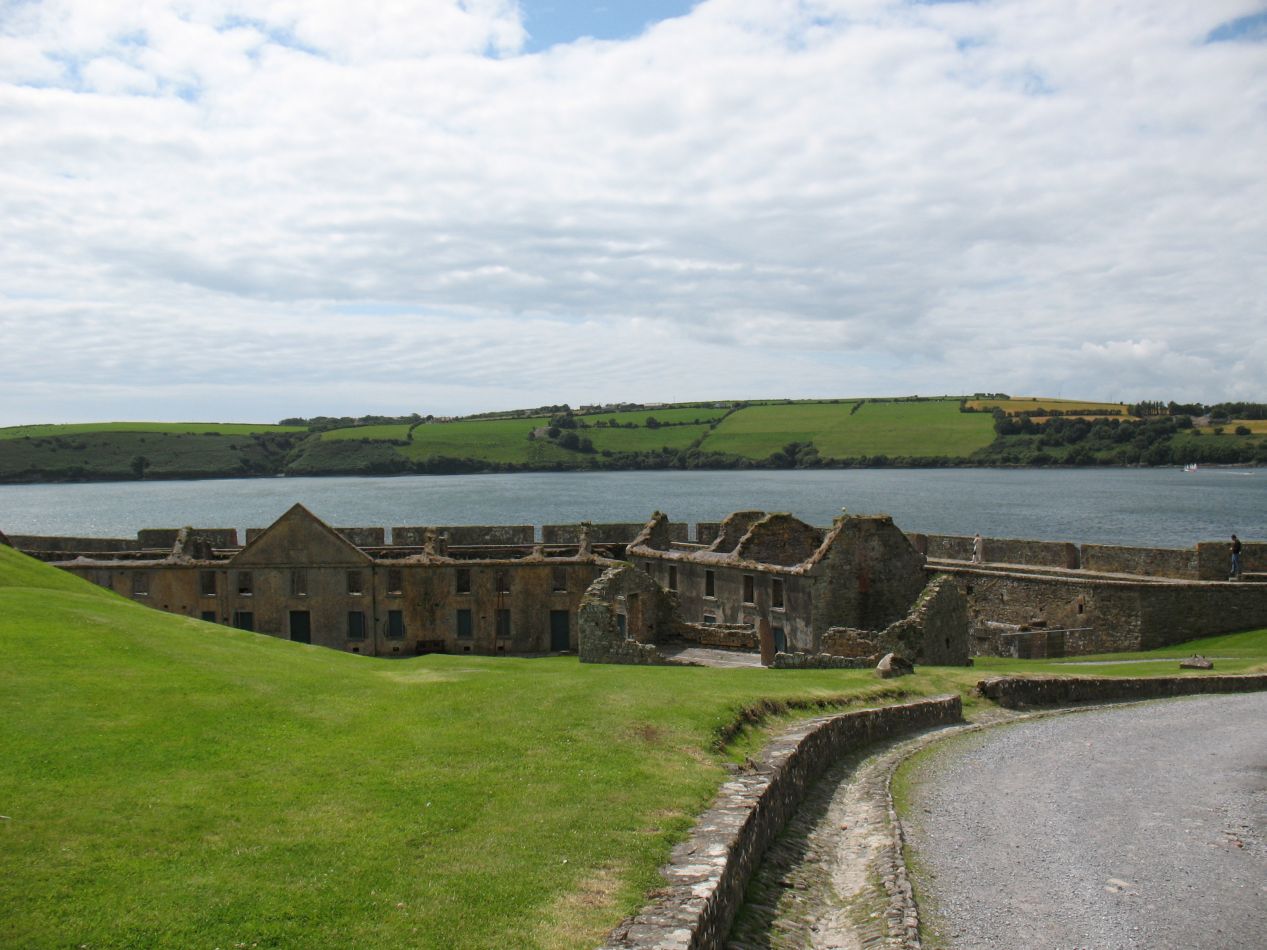


The military defenses of Charles Fort are located a short distance outside the town of Kinsale, protecting the approach to the town from the sea. Charles Fort is a trace italienne style fortification, the classic star-shaped bastion design that reflected the standard for military engineering in the early modern period. The fort was built from 1677-1682 and named after King Charles II, with the intention of projecting royal power into the often-rebellious southern part of Ireland. The location for the fort was poorly chosen though; while it was in a good position to defend against an attack via sea, Charles Fort was overlooked by higher ground on its surrounding land approaches. The only time that it ever saw combat was in 1690 during the fighting in the Nine Years War, and Charles Fort didn't perform particularly well, surrendering after a siege of only 13 days to Irish forces backing the ousted king James II. Today Charles Fort is a local tourist attraction with a small museum inside. I enjoyed having a chance to walk through the crumbling barracks and atop the old exterior walls. This was one of the first places where I had a chance to see a real early modern fortification system in person, even if Charles Fort wasn't a particularly top-tier version of fortification design. I later used some of these pictures in my teaching when discussing military history of the 16th and 17th centuries. It was a beautiful day to be out exploring a historic site like this.


Two more views of the Charles Fort area before I headed onwards. One is a picture looking back at the fortification complex, with the old stone walls highlighted by the afternoon sunlight. I love the way that the fort looks in that picture, with the white puffy clouds floating above it and the waters of the Bay of Kinsale lapping at its feet. The other picture is a view looking down towards the end of the bay, where the water opens up into the Atlantic Ocean itself. I was hoping to walk all the way down to the coast along the water's edge, but there was no direct trail leading there and I became lost along the way. This would end up taking me to other places that I didn't expect.

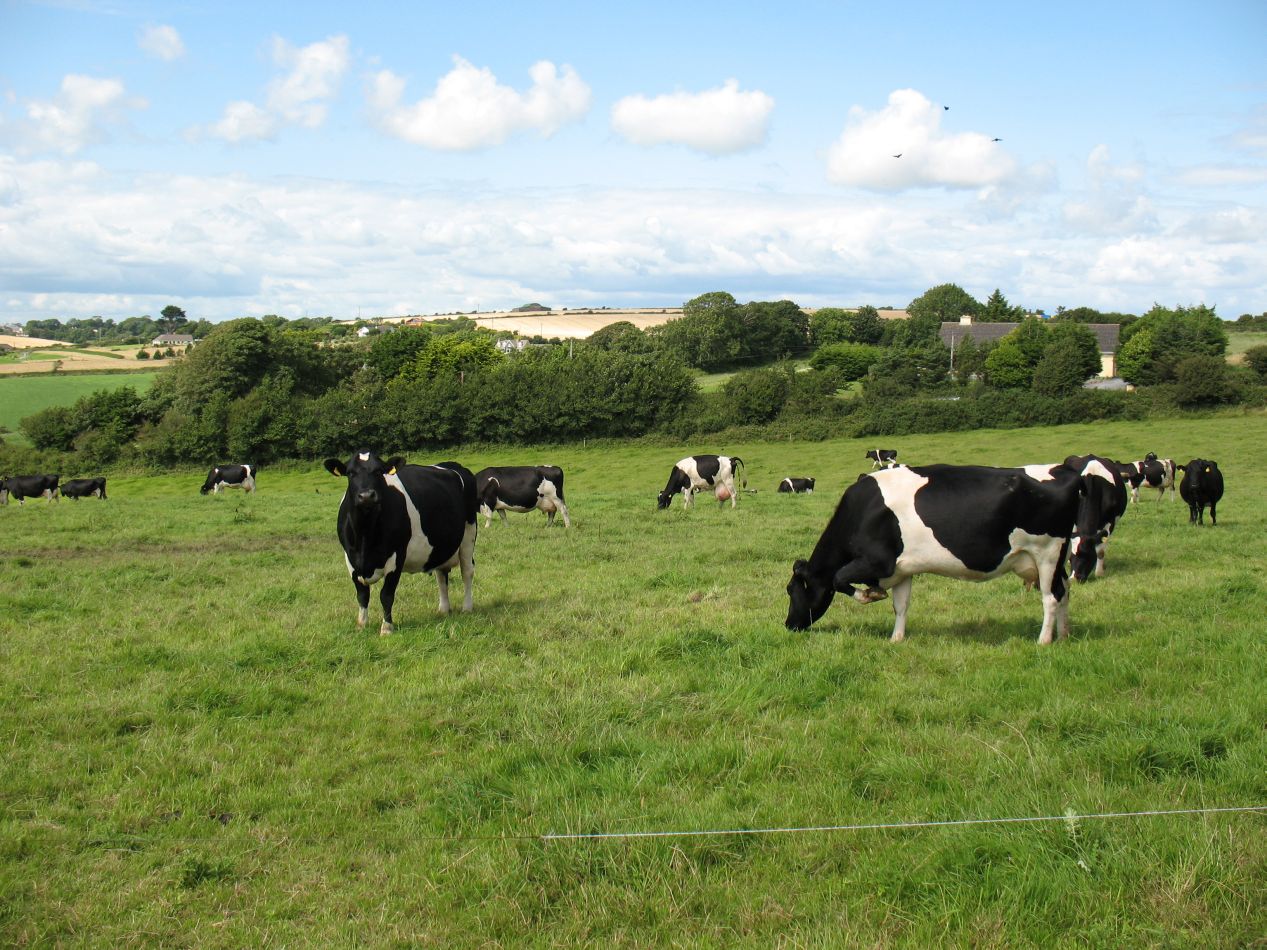


The plan was to walk along the coast and follow it to the sea. Instead, back in this era where I didn't have a smartphone and Google Maps didn't exist, I found myself wandering off track and ended up in a quiet farming area off to the east of Charles Fort. It was quite pretty in this area, with more green landscape everywhere, and I enjoyed leisurely strolling through the bucolic splendor of the Irish countryside. Did I mention there were cows here? Lots and lots of cows with the stereotypical black-and-white spotted patches. They were minding their own business as they fed on the grasses in their fenced pastures. I also took one of my favorite travel pictures ever, the image of an empty road stretching off into the distance under a sky that seemed to go on forever. I liked this picture so much that I've used it for the banners of the Travel section of this website. If you've ever wondered where that picture came from, it was taken somewhere in the rolling hills to the east of Kinsale, Ireland.
There was one other surprise that this jaunt into the Irish countryside had in store for me. Shortly after taking the above pictures, I wandered down a dirt road hoping to make it back to Charles Fort so that I could reorient myself. As I turned out, I wasn't walking down a rough backcountry road - I was actually walking down the driveway of a private residence. I heard loud barking and turned to see the blur of a large dog racing towards me. Caught completely off guard, I could only get my hands up before the dog launched into me, barking its head off and biting at me repeatedly. The farmer who owned the land was fortunately nearby, and came running out of his house to grab the dog and haul it off of me. I knew right away that I had been bitten, but I had no idea whether or not it was serious. Not too serious because I was still walking; it hurt a lot though. The farmer was very apologetic and asked if he could do anything, although I was just as apologetic in return. It was my own fault for wandering onto his property like an idiot.  I certainly didn't blame the dog who was only doing what it had been trained to do. Rather than stick around any longer, I asked for directions back to the fort and headed off back to town.
I certainly didn't blame the dog who was only doing what it had been trained to do. Rather than stick around any longer, I asked for directions back to the fort and headed off back to town.
I had to walk about two miles back to Kinsale and I limped the whole way. When I made it back to the town proper, I was able to stop in a restaurant bathroom and take my first good look at the injury. It wasn't pretty: I had a clear bite mark on my thigh, and my whole leg was streaked with blood that had run down it. My sock on that foot was stained a dark red from blood that had run down into my shoe. I was lucky that I'd been wearing long pants, which had provided some protection from the dog's bite. This could have been truly serious if I'd been wearing shorts. I was able to wash off my leg and clean the wound area, then hobble onwards. In retrospect, I wish that I'd taken a picture to show what this all looked like. I swear that this really happened; if I were making things up, I'd be able to tell a better and more heroic story than this one.


I didn't end up exploring Kinsale town as much as I wanted due to my injured leg. The plan had been to go see Charles Fort first because it closed in the afternoon, and then come back and see the town on the way back. However, by the time that I returned to the old town, my bloodstained leg wasn't in the mood to do too much wandering. The one place that I did see was this house of worship, Saint Multose Church. This is the oldest church (and the oldest building) in Kinsale, with the core of the structure dating back to 1190 AD. There's a fascinating historical incident that took place here, as Saint Multose was the location in 1649 where Charles II was proclaimed king by his supporters upon hearing that his father, Charles I, had been executed. This was not the official coronation since he remained in exile for the next decade, but it's still interesting that this humble church was the location where something like that happened. I found Saint Multose to be a quiet community church, with newer construction surrounding a very old stone core. The place was getting ready to close for the evening, and there was almost no one here when I popped inside for a few minutes. I couldn't stay for very long either, as I had a bus to catch back to Cork.
I took the short ride back to Cork and ate a meager meal bought at the local supermarket due to the need to save money. I did make it back to the hostel where I was staying before it became too dark outside, then went to bed early to get a start on the next day. Fortunately my leg was feeling a lot better the next day, still sore but no longer in a state where I had to limp from place to place. It was a Sunday morning and I wanted to be out on the streets before most other people were awake. Early morning is one of my favorite times to take pictures of urban landscapes, with light enough to see but without people or cars around to clog up the views.

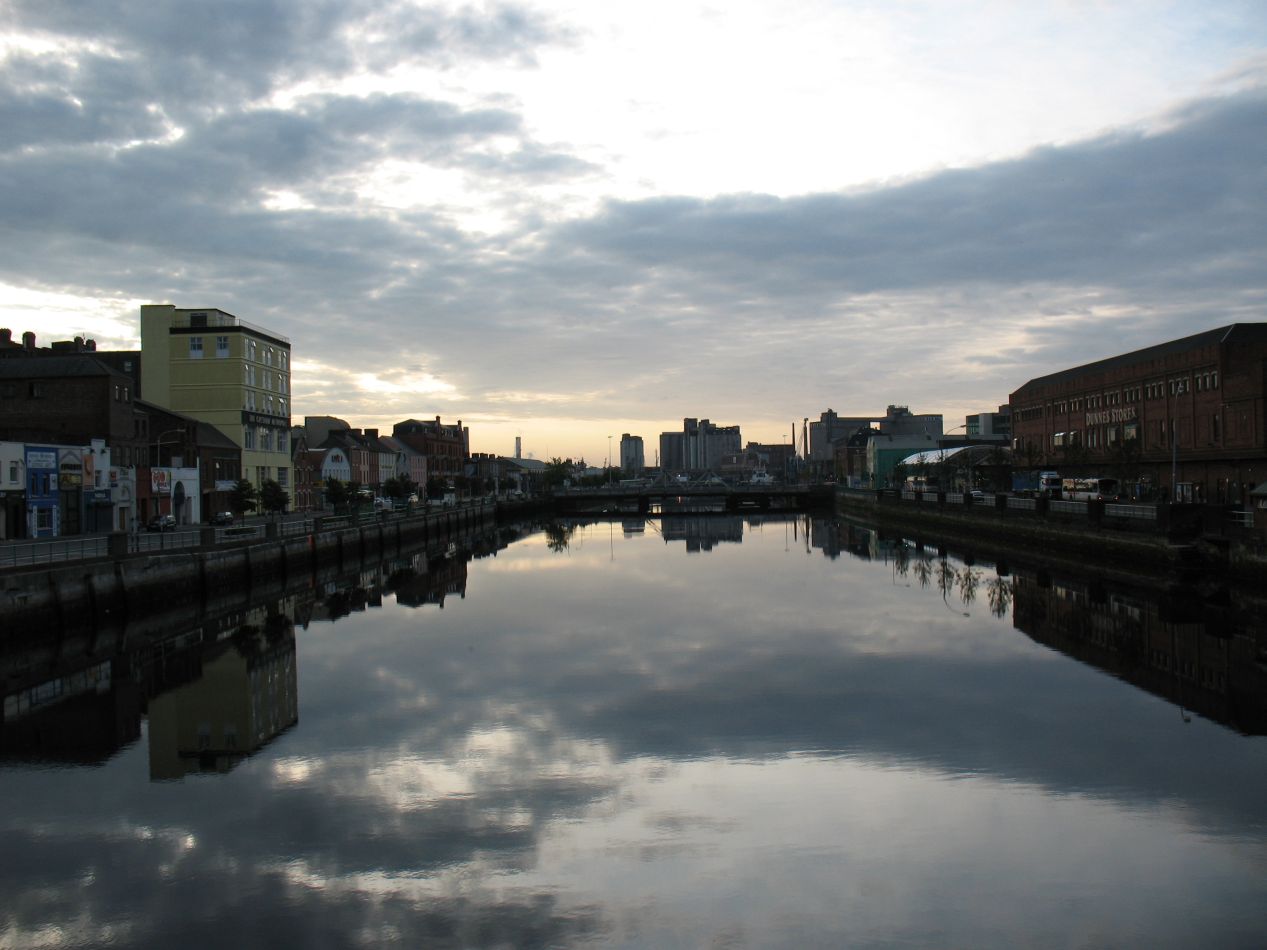


The central part of Cork sits on an island in the middle of the Lee River. This is one of the largest and oldest cities in Ireland, founded initially by Viking adventurers at some point in the 10th century. The name "Cork" comes from an Irish Gaelic word for marshes, a reference to the swampy ground that surrounds the river. Cork has long been known as a center for Irish nationalism (and anti-English sentiment) dating back into the medieval period. I spotted one small sign of the regional character of Cork: it was rugby kits, not football ones, that seemed to be the most popular in the sporting stores throughout the city. These pictures were taken in the early morning on the streets of the central island, looking at the business district that bustled with tourists during the day. I was headed towards one of the city's most famous landmarks:

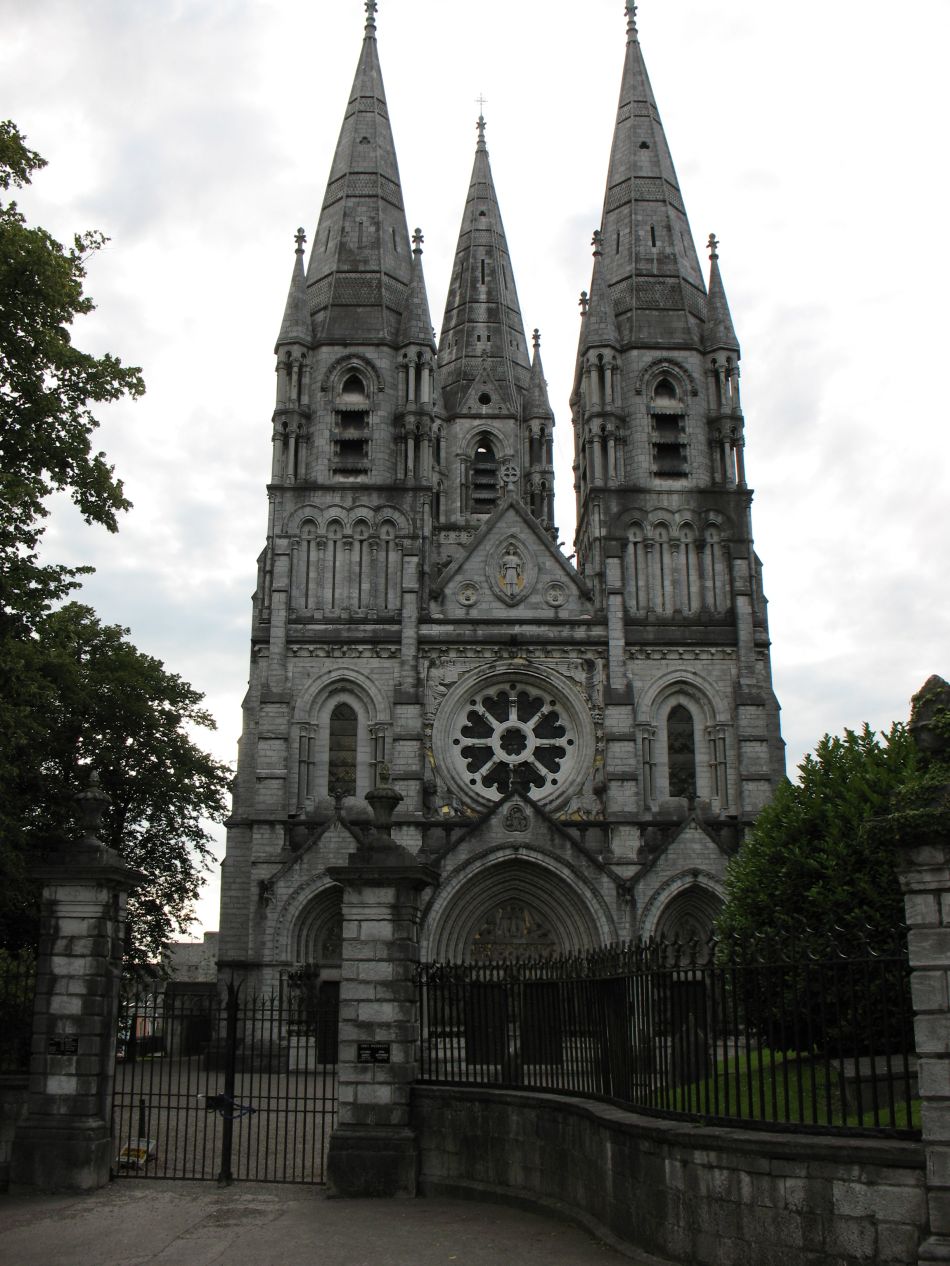


This was Saint Fin Barre's Cathedral, the most prominent church in Cork dedicated to the patron saint of the city. Built in 1879 on the site of an older church, Saint Fin Barre's Cathedral is a grand Gothic Revival structure containing more than 1200 individual statues carved into its exterior. The architect designing Saint Fin Barre's Cathedral was given a budget of £15,000 (a lot of money for the 1870s), which he immediately proceeded to blow through in making the place larger and grander than originally envisioned. This place would end up costing more than £100,000 before the construction was finished. Saint Fin Barre's is designed to look like a medieval cathedral, and without knowing that the construction is a more recent design, it would be easy to think that this dates back centuries into the past. The place was closed when I arrived, and with Saint Fin Barre's being in use throughout the day for Sunday services, this was all that I was going to be able to see of the place. Here's a picture of the interior via Wikipedia for the curious, a standard Gothic interior design with lots of stone pillars and colorful stained glass windows.


The main attraction that I was seeing on this day was Blarney Castle, home to the famous Blarney Stone of Irish legend. Blarney Castle is located a few miles outside of downtown Cork, and I was able to take a local bus over to see it right as the place was opening for the day. This is a true medieval fortification, with the surviving castle initially constructed by the Lord of Muscry, Cormac Laidir MacCarthy - and wow what an Irish name that was! - in 1446. This was built on top of an earlier wooden fortification dating back to the 13th century that was destroyed by fire. Blarney Castle was seized by the Parliamentry forces during the Wars of the Three Kingdoms, but never saw direct fighting throughout its history. As I used to tell my students while teaching, the medieval origins of the castle are very obvious here: tall, thin stone walls designed to keep out human attackers, not gunpowder weapons. A design like this was useless as soon as siege cannons became commonplace, and early modern fortifications shifted to lower, more angular designs to repel incoming shots. Compare the design of Blarney Castle to Charles Fort, created 200 years later, for an obvious contrast. Even here on my travel blog, I can't resist the chance to do a little teaching for anyone who might be reading.


The interior of the castle is what one would expect from a medieval fortress, lots of narrow passageways carved out of rough stone. The staircases up to the top of the castle were very tight squeezes in particular, and overly large or out-of-shape tourists wouldn't have been able to make it up to the top. It was cold and dark in the castle even here in the summer, and I had the impression that this would have been a miserable place in the winters, very difficult to keep much of the structure heated. From the top of the castle, there were lots of scenic views of the surrounding countryside:

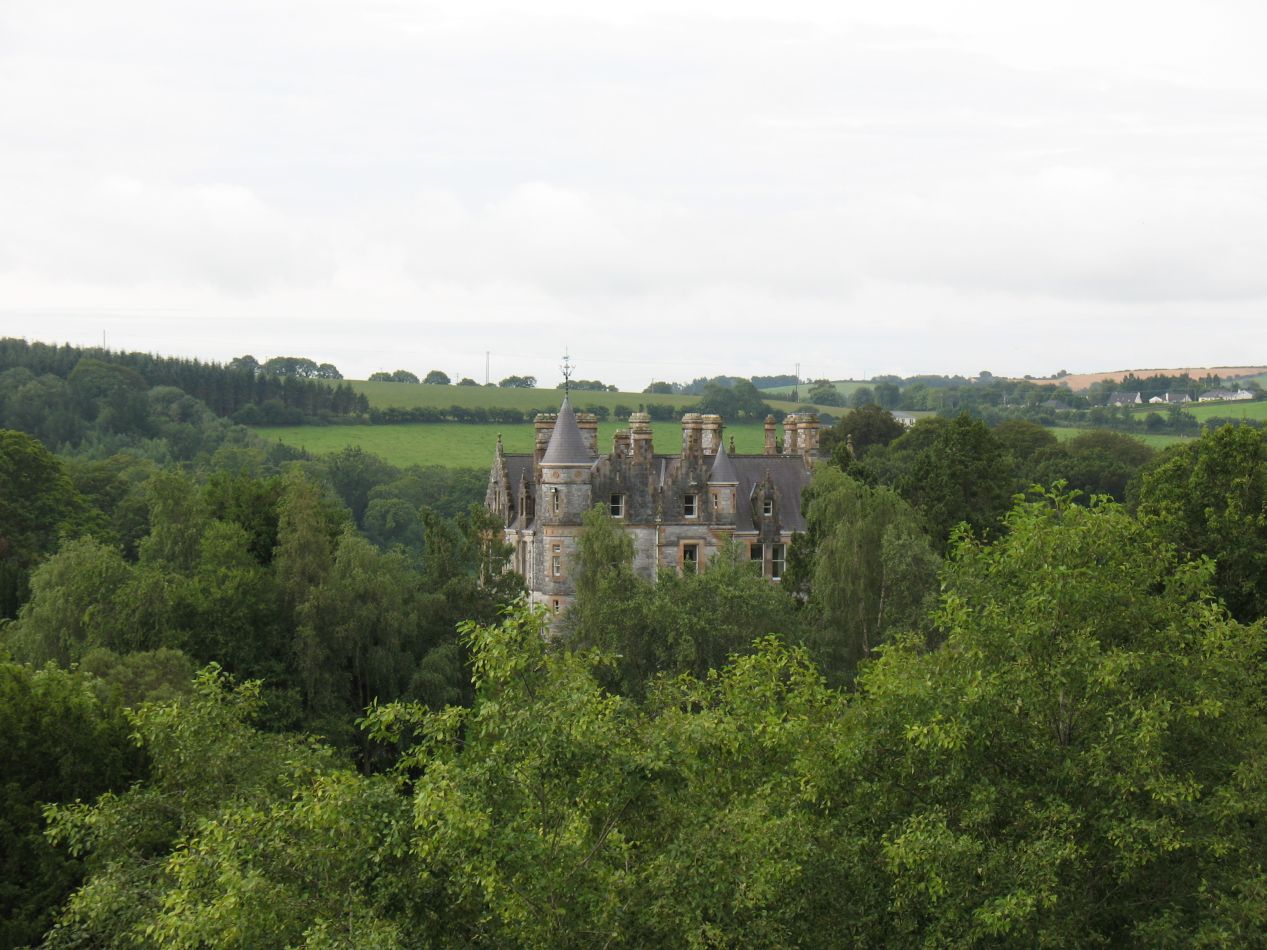


I could see out over the surrounding fields, looking both east towards the city of Cork and west over low rolling hills of greenery. The elegant shape of Blarney Castle House was only a short distance away, a Scottish baronial-style mansion that was built in 1874. It looked like a much more pleasant place to live than the medieval castle. Down below were some of the castle's outbuildings, smaller towers that housed smithies and stables and guardhouses back when the castle was in active use. As for the Blarney Stone itself, the famous rock was completely different from what I imagined. It's located on the OUTSIDE of the castle walls, and in order to kiss the stone, visitors have to hang out over the edge of the walls over the long drop to the ground below. I have no idea why I didn't take a picture of people doing this while I was visiting the castle, so here's two images pulled from Google demonstrating what this looks like:


I had absolutely no desire to do this whatsoever. Dangle out over the edge like that with someone holding my legs? No thank you. Kissing the Blarney Stone is supposed to provide the gift of eloquence to those who do so. I'm about as unsuperstitious as you can get, and passing up this opportunity didn't particularly bother me. As far as the gift of eloquence goes, that determination will have to be left up to the reader of this travel blog. 


Of course, having made it all the way to Cork and seen both Kinsale and the Blarney Castle, now I had to make my way back to London again. I boarded another tour bus in the Cork bus station on Sunday afternoon and prepared for another overnight trip back across to the British capital city. Soon after leaving Cork, the beautiful weather than I had been enjoying turned stormy and rainy. I figured that this was also part of the Irish experience, lots and lots of rain. The island wouldn't be so green everywhere if it wasn't a frequent target for watery weather pouring in off the Atlantic. It rained the whole way back to London, and I was very glad indeed that the rains had held off until I was on the bus trip back to the metropole. This would have been a miserable trip if it had been raining the previous day in Kinsale.
That was the conclusion of this particular short trip, as I made it back to London safely and went back to working in the British Library for the remainder of my trip. I only had four more days before I returned back to the USA, and I made the most of them by reading as many primary sources as I could. It proved to be a successful research trip, giving me a good idea of where I needed to focus my efforts for an extended return trip to London down the road. That would come a couple years later in 2009, when I spent an entire semester in London doing the bulk of the primary source research for my dissertation. But that's a story for another section of this website. Until then, I hope you enjoyed this brief detour to Ireland, and thanks again for reading.



